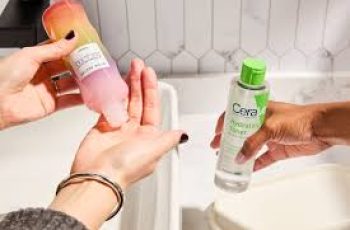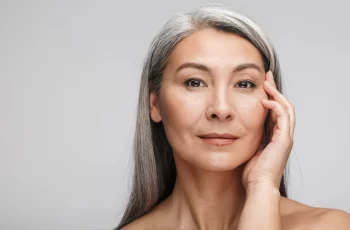
Uses and Benefits of Amla Oil
Amla oil is an oil extracted from the Amla plant (Emblica officinalis L.).1 Amla is a native Indian plant often used as an herb in Ayurvedic medicine.2
Amla plants are known to have antibacterial, anti-inflammatory, and antioxidant properties. The oil, in particular, has been used to nourish and strengthen hair.1 Some limited data suggests that amla oil may help with hair growth, with similar effectiveness as medications like Rogaine (minoxidil).3
Uses and Benefits
Amla oil is most well-known as a hair care product, and it’s mainly sold as that. Besides hair care, other products containing components of amla plants have been known to have strong antioxidant and anti-inflammatory effects, as well as cardiovascular benefits.
Hair Loss
The oil of amla plants is most commonly used as a hair care product. It’s often touted as a product that can help reduce hair loss. However, the research on this is limited.
For example, one study examined the use of a blend of herbal extracts, including amla oil, compared with products containing Rogaine (minoxidil), one of the most common medications for treating hair loss. The study concluded that this mix of herbal extracts containing amla oil was about as effective as products containing 3% minoxidil in treating hair loss. However, the herbal blend was tested on human hair cells in a lab and mice, not live humans.3
An older study found similar results: products containing amla oil were as effective as 2% minoxidil at treating the hair growth of rabbits.4
One human study looked at the effects of amla plants on female androgenetic alopecia (hair loss in people assigned female at birth). However, this study looked at oral products containing amla plants—in this case, an amla syrup. It did not look at amla oil applied topically to hair. Still, the study showed promise: people who took amla syrup had increased hair growth. Specifically, amla syrup increased the growth phase of hair growth in study participants.5
Hair growth phases are as follows:6
Anagen: Active growth phase, which generally lasts about 2-8 years
Catagen: Transition phase (hair growth slows), lasts several weeks
Telogen: Resting phase (new hair develops), which lasts 2-3 months
Exogen: Shedding phase (newly developed hair pushes old hair out)
Other Uses of Amla Plants
Although there is limited research on the benefits of amla oil in particular, several studies have found promising roles for using amla plants to treat certain medical conditions. Here’s what to know:
One study found that amla powder can lower blood glucose levels in non-diabetics and diabetics.7
One study also concluded that amla powder could lower blood glucose levels in healthy people and people with diabetes. Lower total cholesterol triglyceride levels were also noted.8
One study saw improved platelet function among people with diabetes who took amla plant extracts.9 Platelets are blood cells that help with blood clotting.
How To Use
Amla oil is typically sold as a hair oil or an ingredient in a hair product, such as a shampoo or conditioner. Amla oil products are often used topically on the hair and scalp and aren’t meant to be ingested. However, some amla plant products, such as amla powder, juices, syrups, and pastes, are taken orally.2
The Food and Drug Administration (FDA) doesn’t approve cosmetic products like amla oil before they go to market. Therefore, they don’t regulate the dosage or concentration of these products. The only exception is hair color products, which require FDA approval before going to market. As such, you must rely on the companies selling amla products to determine the recommended concentration and dosage.10
The study that looked at amla oil for hair growth tested a mixture of herbal oils that included amla oil. Each formulation contained 1-10% of each drug. Formulations that contained 7.5% of each drug showed the best results in terms of hair growth.4
One study looked at amla powder and its effect on metabolic syndrome and cardiovascular health. Study participants consumed capsules with 125 milligrams (mg) of amla powder four times a day, for a total of 500 mg daily. This dose was well-tolerated, improved vascular health (how effectively blood vessels transport blood and oxygen), and reduced oxidative stress.7 Oxidative stress is an imbalance between the production of harmful free radicals and beneficial antioxidants in your body.
Safety and Side Effects
There are no studies on the safety or side effects of amla oil. If you are using it for the first time, it’s best to contact a healthcare provider. You can also do a “patch test” on a small skin area to ensure the oil doesn’t cause irritation.
There is a little more research on the oral ingestion of amla plants. One clinical evaluation of amla found no significant negative effects or complications among people who took capsules containing up to 500 mg of amla powder daily. Some study participants experienced mild gastrointestinal (GI) side effects, including diarrhea, loose bowel movements, and constipation.7
It’s not known how amla oil might affect specific populations, such as pregnant people, breastfeeding individuals, or children.
If you are pregnant or breastfeeding, contact your OB-GYN or midwife before using amla oil.
Contact your child’s pediatrician before using amla oil on your child.
Never ingest amla oil sold as a hair or beauty product.
Choosing an Amla Oil
Many products on the market contain amla oil. In most cases, it’s mixed with a carrier oil, such as coconut oil. Often, amla oils are mixed with other plant extracts and sold as a hair oil blend. Amla oil may also be sold as an ingredient in shampoos, conditioners, and skincare products.
As the FDA notes, people might assume that a “natural product” means it is safe. However, products like amla oil aren’t regulated or tested by organizations like the FDA. That’s why it’s important to do your due diligence when choosing an amla product.11
Here are some tips to keep in mind:
Look at all the ingredients in any amla oil you are considering purchasing. If any of the ingredients have caused you skin irritation before, choose a different product.
Do a “patch test” with any new amla product you try. Place a small amount of the product on a small area of your skin and wait a day or two to see if you have any reactions.
Follow the instructions on products carefully and contact the manufacturer if you have any questions or concerns.
Purchase the product from a well-known company with a track record for safety.
If you are pregnant, nursing, or have any underlying health conditions, contact your healthcare provider before using.
A Quick Review
Amla oil is an oil made from the amla plant. The plant has been used in traditional Indian medicine for decades and shows promise in treating various conditions, including cardiovascular and metabolic diseases.7
Amla oil is usually used to nourish hair and reduce or reverse hair loss. Limited data show that it has similar effects on hair loss as minoxidil.3
Amla oil appears to be safe for usage, but use it with care, and contact your physician if you are pregnant, nursing, or considering using amla oil on a child.7


